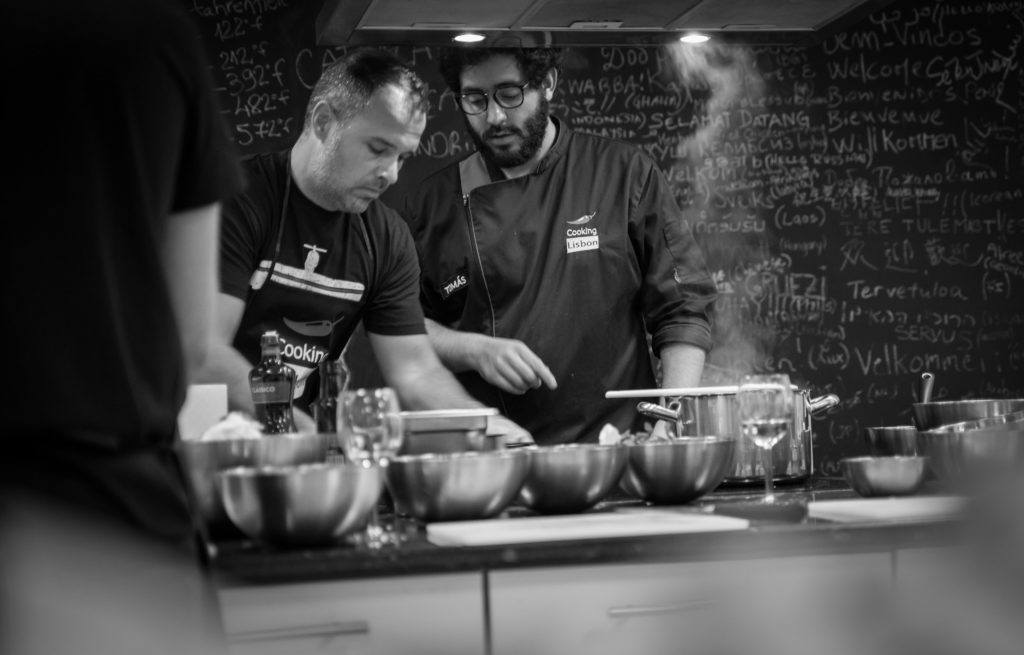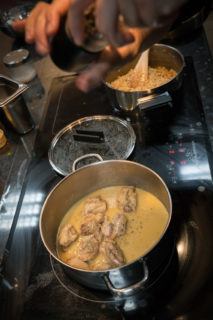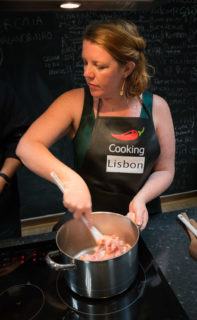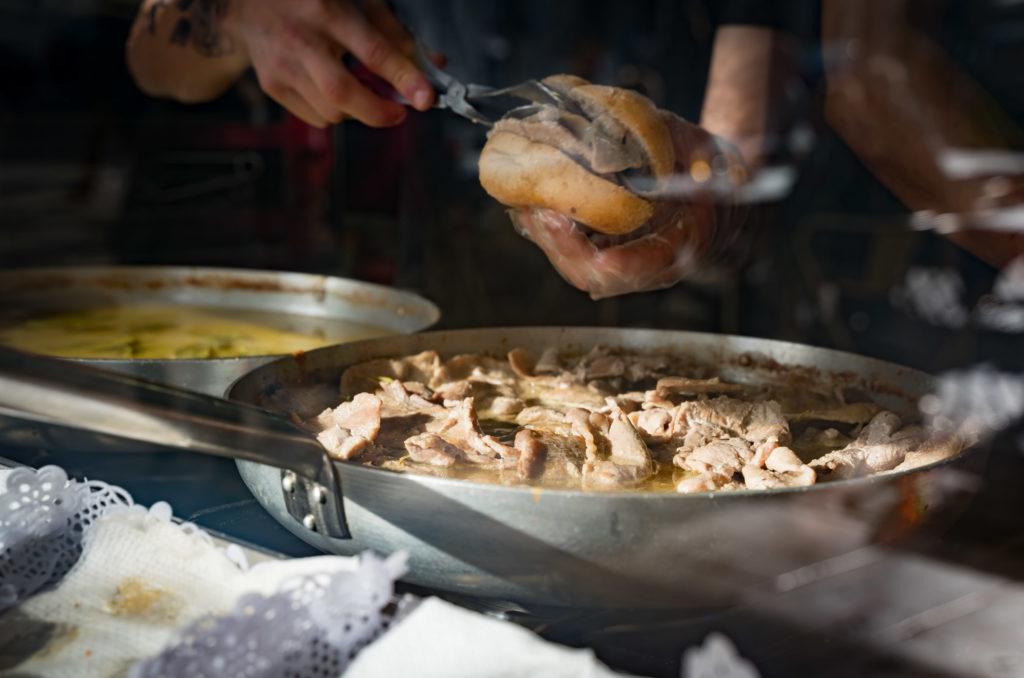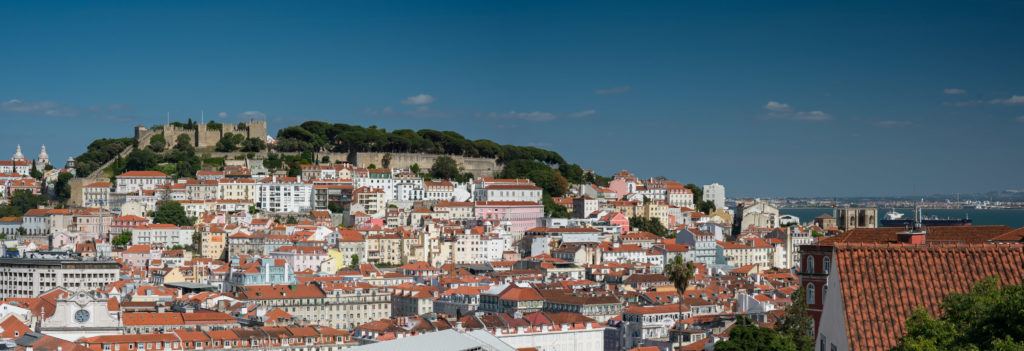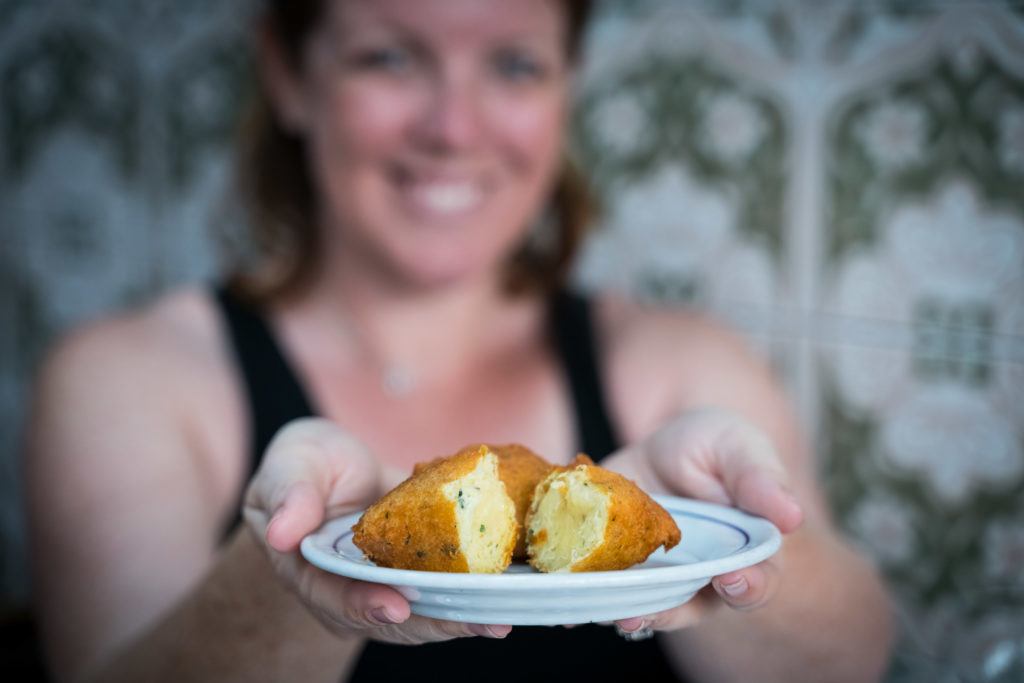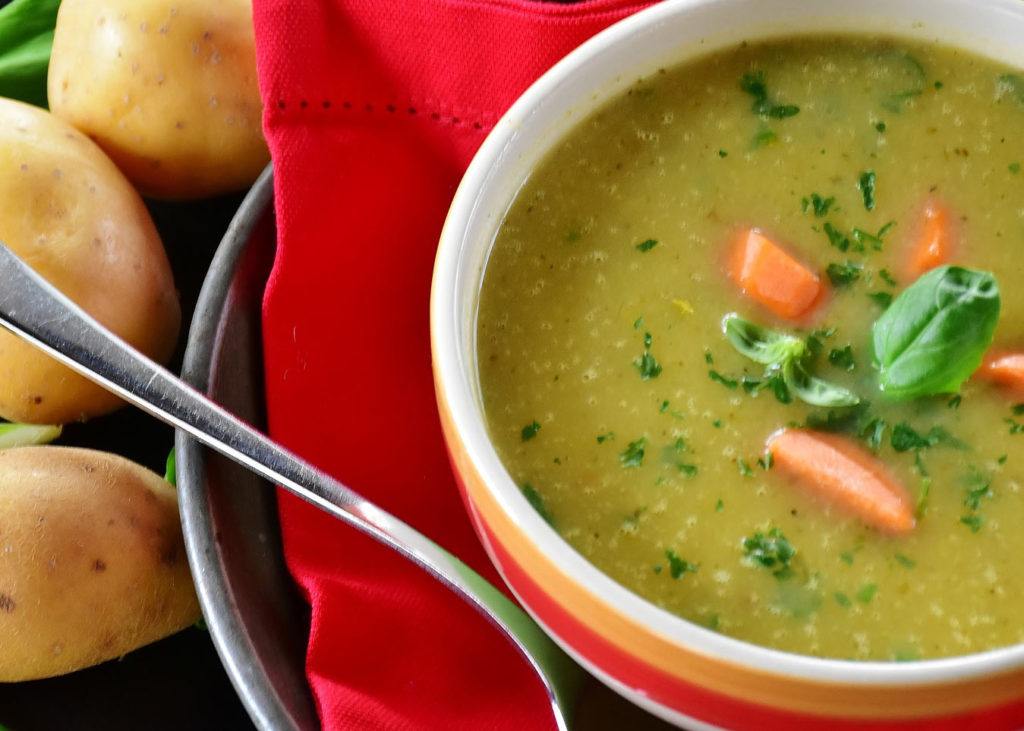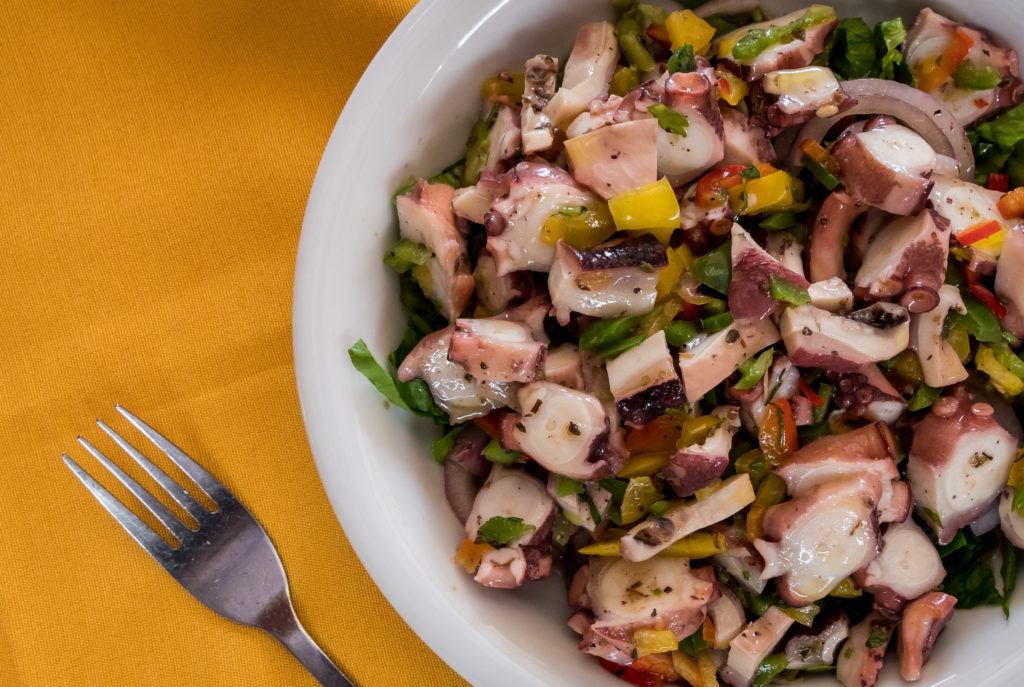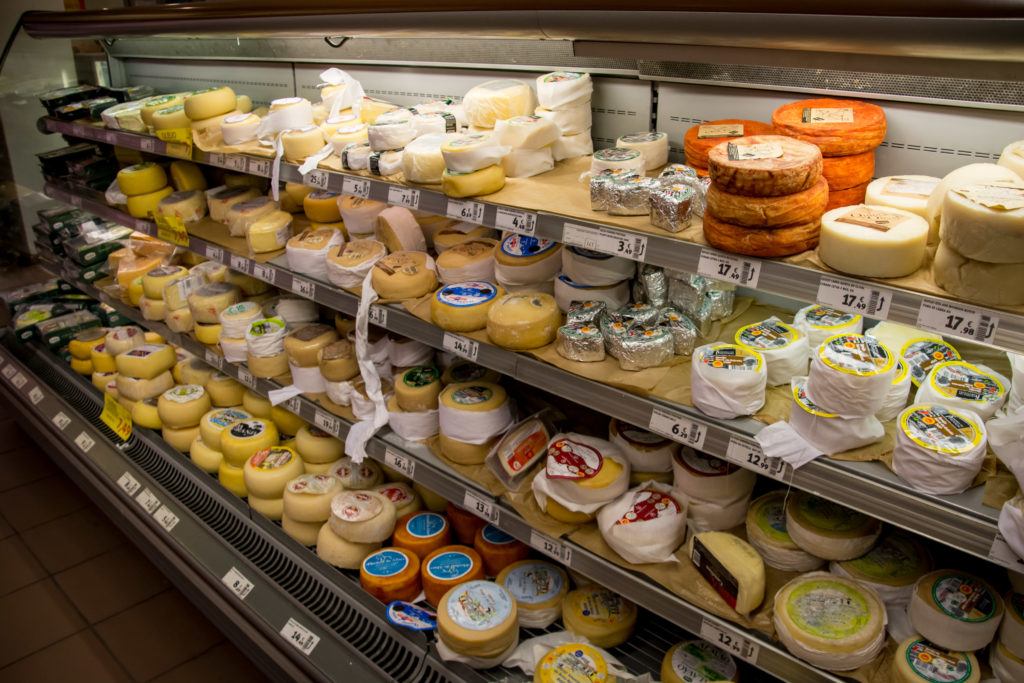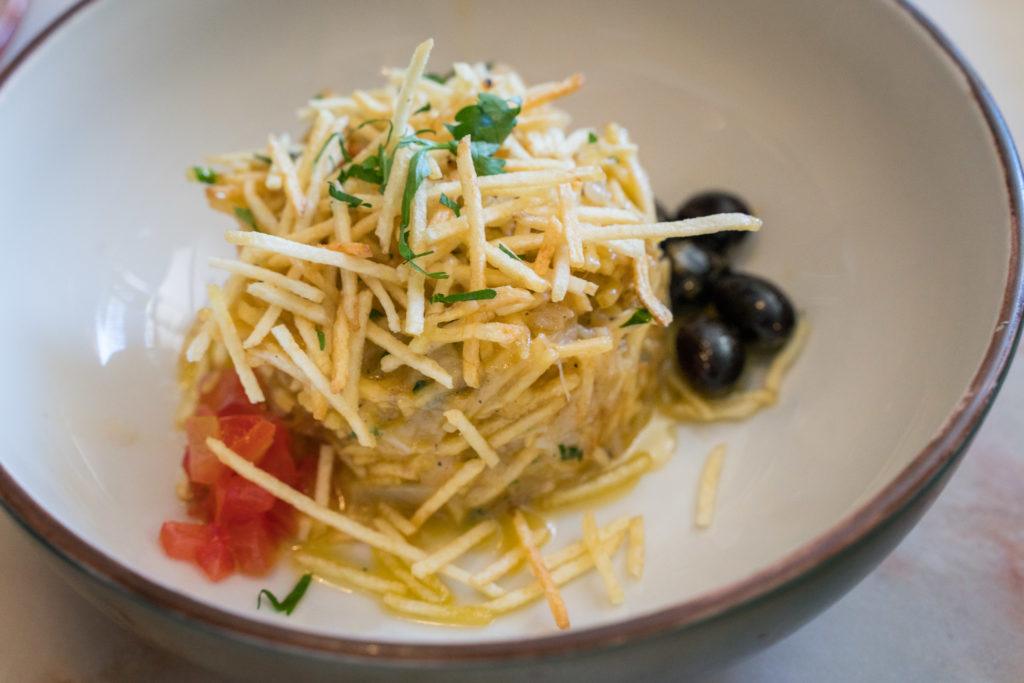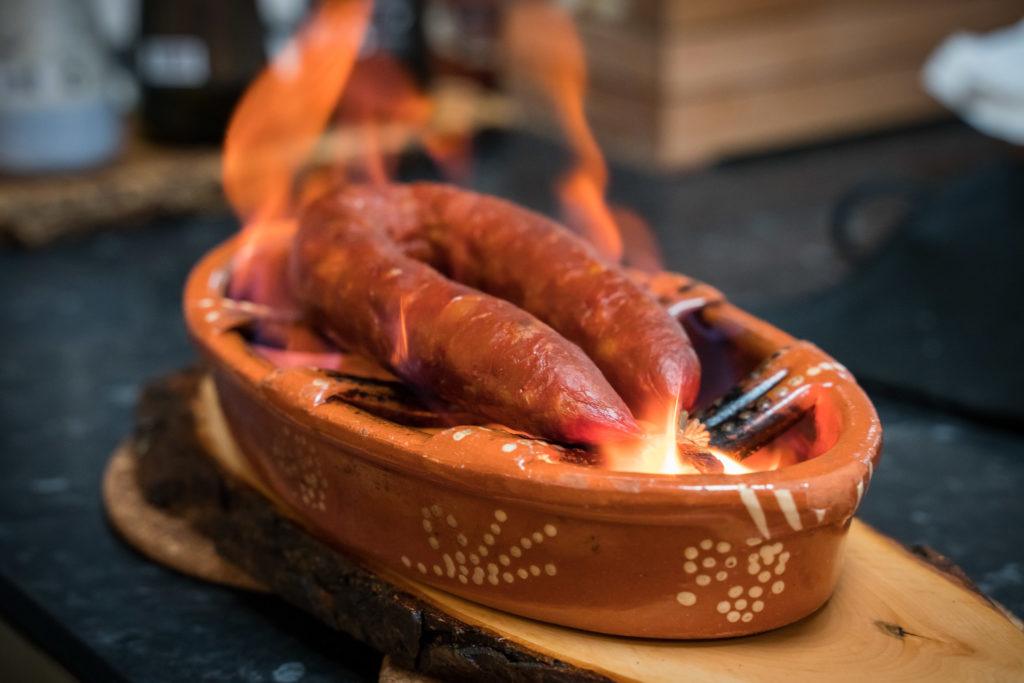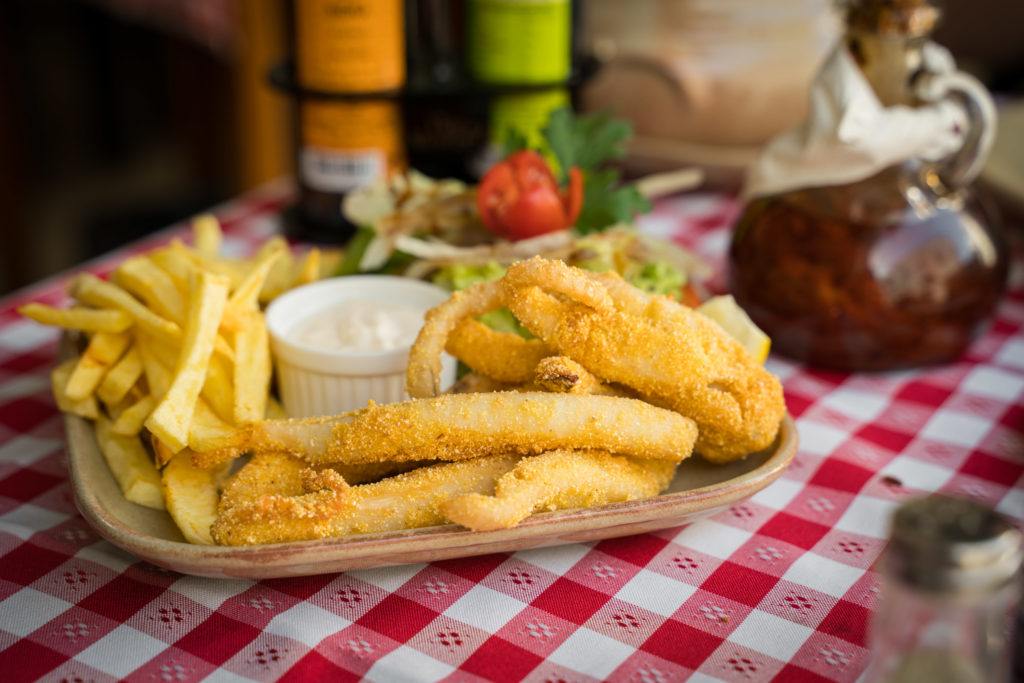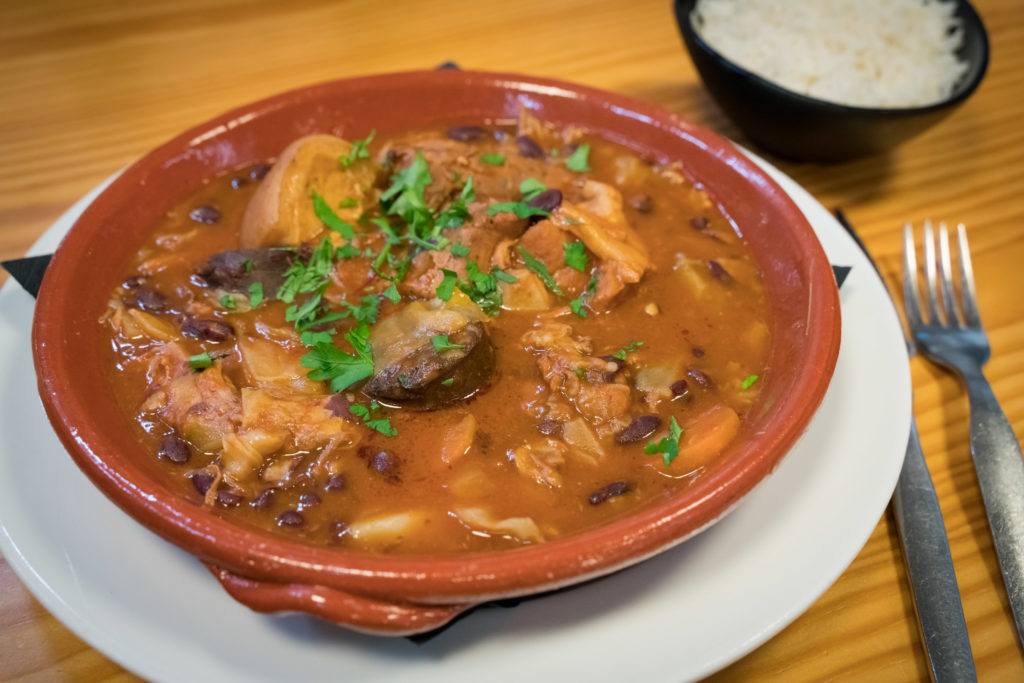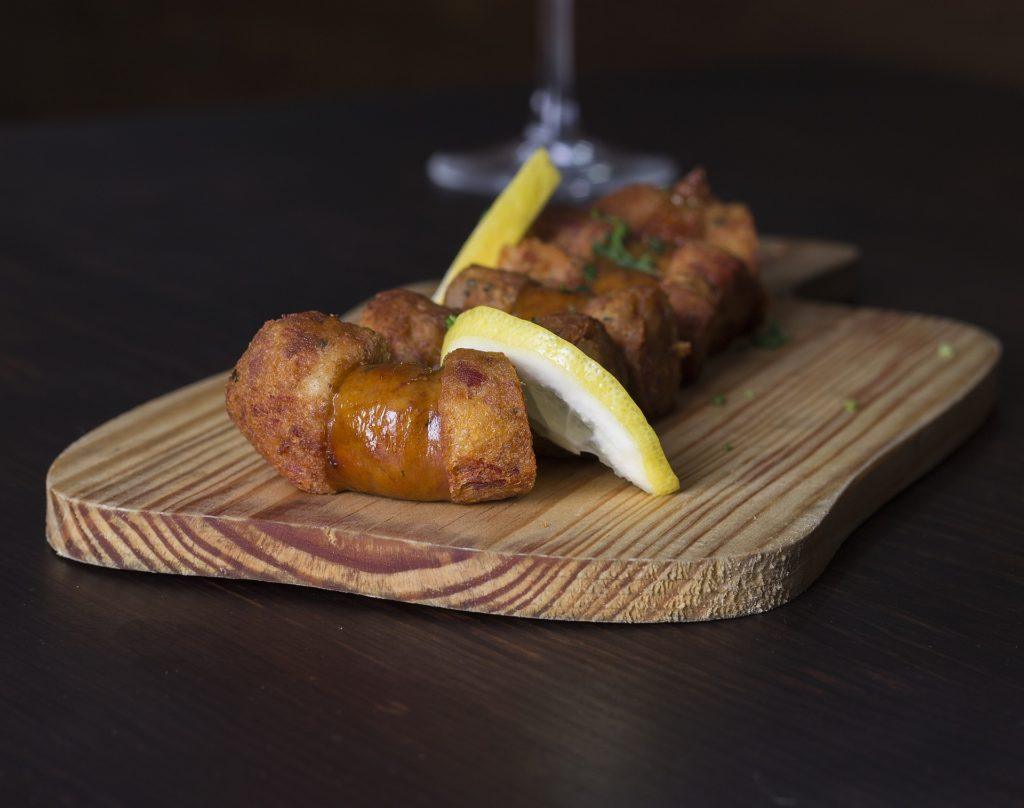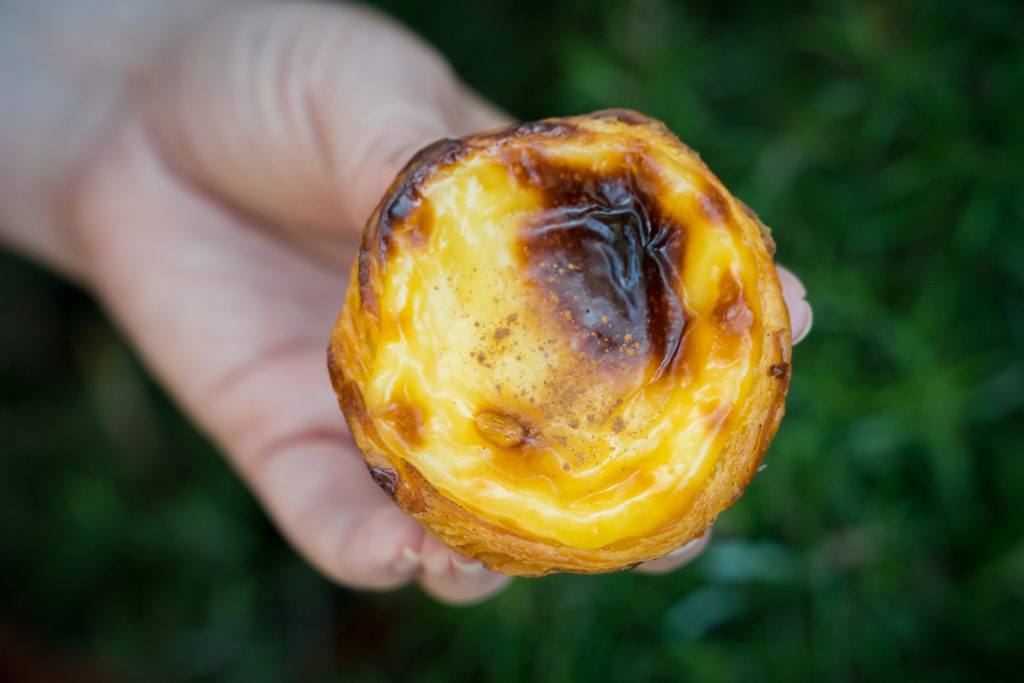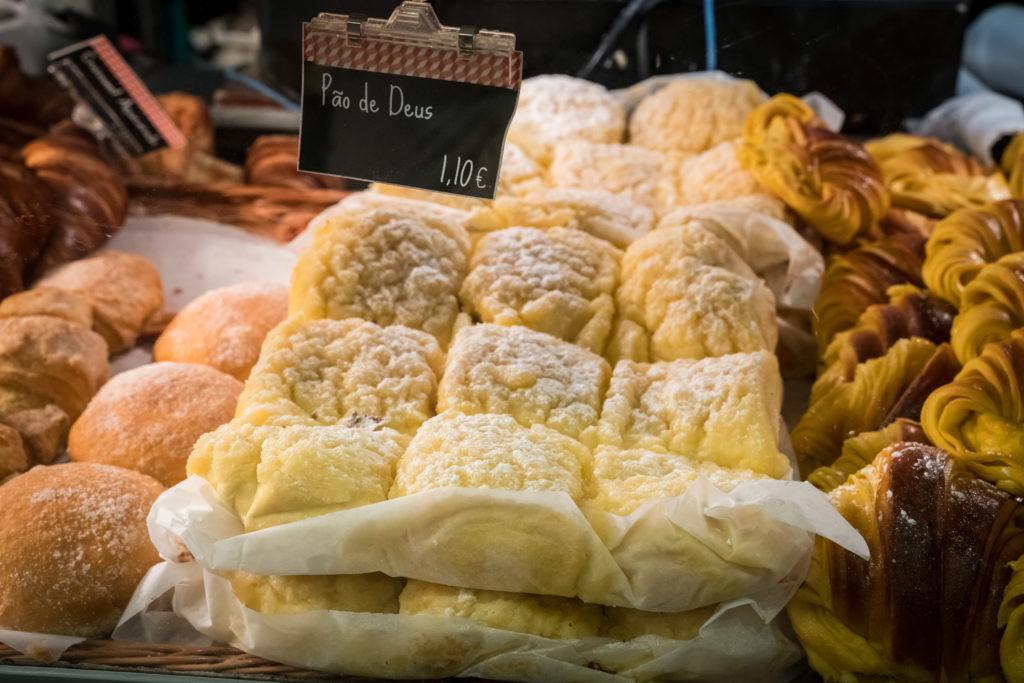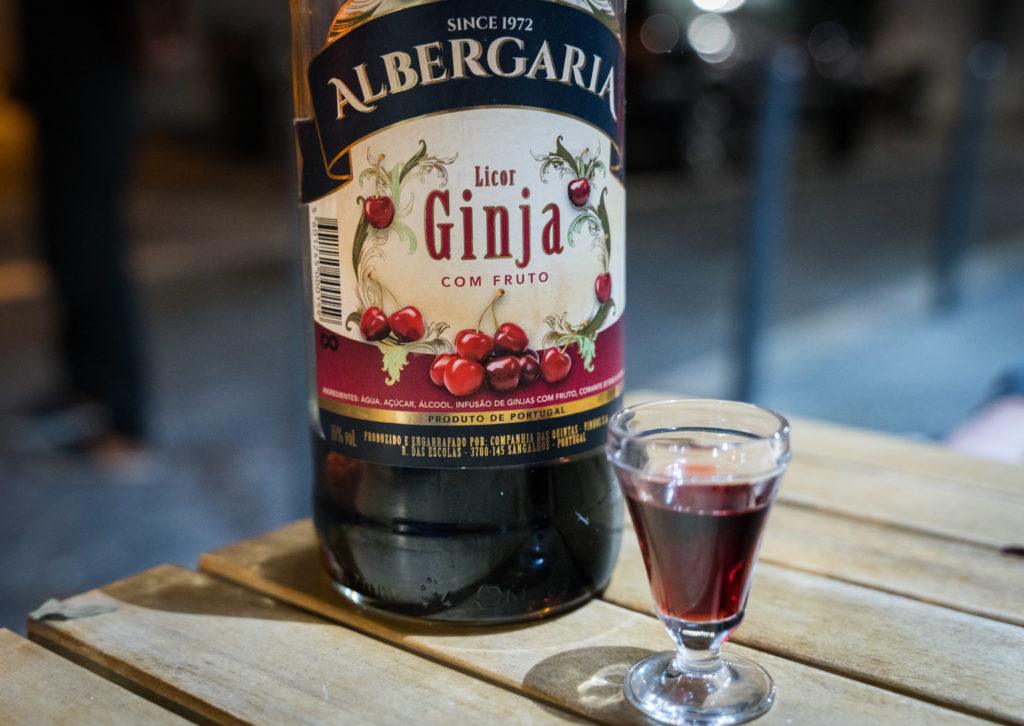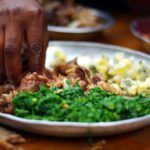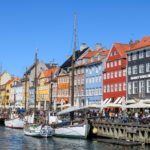Lisbon Food Experiences & What To Eat In Lisbon: For our foodies guide to Lisbon we search out typical Portuguese food both from the Lisbon restaurants where the locals eat and by checking out the Portuguese street food scene. We dig into the history and style of the cuisine with a guided Lisbon food tour as well as getting our hands messy taking a Lisbon cooking class.
As one of the most important maritime cities in world history, Lisbon has influenced and been influenced, by ingredients from all over the world, especially since the age of discovery in the 15th/16th century. Africa, India, The Americas and more. Find below a list of what to eat in Lisbon – more than 35 dishes to discover – as well as the stories behind the most typical Lisbon food.
Lisbon Food Table Of ContentsLisbon Food: An Historic Introduction What To Eat In Lisbon: Soups, Snacks & Starters What To Eat In Lisbon: Mains & Seafood What To Eat In Lisbon: Desserts & Drinks Accommodation in Lisbon (Opens In New Tab): Booking.com | Agoda | Hotels.com | Lastminute.com | Airbnb (Get $25 Credit) Disclaimer: This article contains revenue generating links. Please support our blog by making bookings through our links, rather than searching our suggestions on google. Some experiences / food mentioned here were provided to us complimentary for review purposes. Our opinions are our own and we provide an honest review, not an advertorial. |
Lisbon Food: A Historical Introduction
Portugal is a 35,000 square mile strip of land along the Atlantic Ocean. At the very end of southern continental Europe, bordered only by Spain and the Atlantic. With over 500 miles (800KM) of coastline, seafood takes an important place in typical Portuguese food culture.
But Portugal’s proximity to the ocean also played a part in their colonial past, as they both traded and conquered their way around the globe. The back and forth of ingredients from both east and west has shaped Portuguese cuisine. The Portuguese also left their culinary mark all over, from Brazil to Mozambique, Macau to Goa, and many more.
Portugal was once occupied by the Romans, who are attributed with introducing wheat, onions, garlic, olives, and grapes. Later, around 711 AD the Moors from North Africa invaded, bringing rice, figs, lemons, oranges, and almond trees.
Modern day Portugal found its roots in the north of the country where a Visigoth state eventually became called Portugal and slowly took back lands south towards the very south coast of the Peninsula, known as the Algarve coast today.
By the 15th century, the great Age of Discovery had begun. Before the Americas were discovered in 1492, Portuguese explorers had already claimed many Atlantic islands like Cape Verde, The Azores, Madeira and also taken lands south along the coast of Africa.
In the 15th century, Prince Henry the Navigator instructed Portuguese explorers to bring back any exotic fruits, nuts, and plants they found. New ingredients and the future spice trade would have a big effect on Portuguese cuisine.
As Portugal gained new lands, things like tomatoes and potatoes were brought back home. African coffee was sent to create massive plantations in Brazil. And vice versa, chilis from Brazil were brought to Portugal’s African colonies – and the little chilis are called “Piri Piri” in Portugal and used in many dishes. Also, spices like curry powder and cinnamon returned regularly from India.
The Lisbon area has been inhabited since Neanderthal times, with the first permanent settlements appearing around 2500 BC. Lisbon became the capital of Portugal in 1255 AD.
As a cosmopolitan capital, in Lisbon, you’ll find cuisine from all over Portugal, as well as plenty of international food, especially dishes from ex-Portuguese colonies, like Angola, Goa, Brazil and many more. And, more recently, immigrant cuisine from new arrivals on the culinary scene, like Nepal.
But, in this article, our focus is on traditional foods of Portugal that were either created in Lisbon or mainland Portugal and which are everyday favourites you can find all over Lisbon.
Before we get onto the list of what to eat in Lisbon, a couple of Lisbon food experiences that are ideal for visitors.
Lisbon Cooking Class
We love cooking classes. Learning about the food as you also learn hands-on how to make it, not only results in a delicious evening but also in getting the knowledge to take that little bit of flavour away and make it when you get back home. When it comes to what to eat in Lisbon, one of our top recommendations has to be the Portuguese food you learn to make yourself!
We teamed up with Cookly who offer incredible cooking classes around the world including the one we did in Lisbon with Cooking Lisbon. We chose the gourmet cooking class to go a little beyond the standard class but there’s plenty to choose from.
Our expert chef shared some unexpected stories about Portuguese culinary culture. Like, the slang term for a spatula is the same as the name of the ex-dictator who was overthrown in 1974. Because he was very frugal and wouldn’t waste anything!
We also got some pro tips for cooking sea bass fillet perfectly (it was soooo tasty!). Plus some cool ideas that you might not find in restaurants, like making your own “Portuguese bacon bits”… Actually, they are churiço (chorizo), whizzed in a blender, then baked until crispy. Throw that on top of your creamy chicken fricassee for a salty-porky kick. How had we never thought of doing this!!!
But, the biggest draw of the cooking class was definitely going hands-on in the cooking with the rest of the guests. It was a very interactive class, and our host was 100% on top of everything from start to finish. Keeping everyone happy. Keeping an eye that prep and cooking were being done just right and also that wine glasses were never empty. (very important!)
The highlight of the dishes we made (which do vary depending on the season and market that day) was the Pastéis de Tentúgal (pictured below). Crispy phyllo pastries from Tentúgal, in north-central Portugal. Sweet, eggy filled and oven crispy pastries. I had to eat quite a few, for quality control purposes. The technique for getting the filling just right involved mixing egg yolks with hot syrup. Something you could easily mess up and curdle. But our expert teacher helped us get them perfect.
Check out the gourmet cooking class.
Or take a look at the other cooking classes & market tours available via Cookly
Book a cooking class in Portugal
Take A Lisbon Food Tour
Our preferred way to get rapidly orientated with a city and its food is to take a food tour with a local expert guide. To try as many things as possible in the shortest time, we took the “Lisbon’s Favourite Food Tour: The 10 Tastings” With Luciana @ Withlocals.
The tour company’s model is specifically to connect visitors with local guides for intimate small group or private tours where you can get personal attention from the guides. We ask a lot of questions, so smaller groups are ideal for us. You can even book the guide of your choice, rather than just the tour itself, so you can read their reviews and see who is the best fit for your style. Some are foodies, some are teachers, some are music lovers, and depending on the tour you want to take, Withlocals will have the perfect guide to suit you and your travel tastes.
Did you know that Withlocals only offers private tours? How good is that! Just your group and your guide ready to go out and eat what Lisbon has to offer! This was especially great for us as it meant we had a little bit of flexibility in the dishes we tried, based on the sorts of things we were most interested in.
As well as lots of food stops, we also got to see and learn a bit about the Barrio Alto & Chiado neighbourhoods, beginning with great views across Lisbon from Miradouro de São Pedro de Alcântara. Starting from the top of the hill means the tour is all downhill from there – perfect for a rapidly filling belly.
We don’t want to give away all of the dishes and locations on the tour but you will absolutely get to try what I rate as the BEST pasteis de nata (Portuguese egg custard tarts) I’ve ever tasted. After spending 5 months in Portugal and doing a lot of testing, I was blown away by how good these were. Suffice to say, we went back again a few days after the tour.
Expect pork & bacalhau – two of Portugal’s favourite proteins. And don’t worry about leaving hungry – you’ll be stuffed by the end of this tour!

We took “Lisbon’s Favourite Food Tour: The 10 Tastings” With Luciana @ Withlocals
Our guide Luciana was bubbly, chatty and fun, keeping us actively engaged and making us feel very welcome.
Check out all the Withlocals Lisbon Food tours
Learn More about the “Lisbon’s Favourite Food Tour: The 10 Tastings“
Our Lisbon Food Podcast
In This Lisbon Food Episode:
- Fishy history – the surprising story of how cod became one of Portugal’s national dishes
- Porky power – The Portuguese sandwich that locals can’t seem to get enough of
- Plus, the Lisbon liqueur that left our shoes sticking to the sidewalk.
Listen to other episodes of “The Dish” on your preferred podcast platform:

Listen & Subscribe: iTunes | Spotify | Google Play | Stitcher
RSS: https://feeds.captivate.fm/thedish/
Support: Become a Patron | Tweet: @foodfuntravel | Email: [email protected]
THE BELOW CONTENT IS A COMPANION, NOT A TRANSCRIPT, FOR THE PODCAST
Foodies Guide Lisbon
(Check out this article if you’re looking for a non foodie Lisbon City Guide )
What To Eat In Lisbon: Soups, Snacks & Starters
Lisbon food to get you started. From Portuguese street food to typical Portuguese food that you just have to try in Lisbon.
Portuguese street food: Bolinhos de Bacalhau / Pasteis de Bacalhau
A popular Portuguese street food. Bolinhos de Bacalhau also called pasteis de Bacalhau – little cod and potato fritters, a bit like croquettes. More on why salt cod (bacalhau) is so popular in Lisbon, in the mains section below.
Bacalhau com Grao
Cod & chickpeas salad. A simple, cold dish for the summer. A dish you’ll get an opportunity to try on the WithLocals 10 tasting Lisbon Food Tour
Caldo Verde
Most Lisbon restaurants offer a Sopa do Dia (soup of the day). When it’s available, be sure to try Caldo Verde, a warm green soup made with simple ingredients like potatoes, kale, olive oil and salt. It was voted one of Portugal’s 7 gastronomic wonders by locals in 2011.
Octopus Salad
Octopus is another part of the extensive seafood variety that you’ll find with typical Portuguese food.
Quejio (Cheese) – Specifically Queijo de Azeitão
Portugal is definitely a cheese nation. You’ll find many unique types of Queijo but one of the most important to try is Queijo de Azeitão.
This unpasteurised sheep cheese has been awarded a PDO protected origin status and is produced in the town of Azeitão about 40KM east of Lisbon.
This is a hard rind cheese, you don’t eat the rind and instead, slice off the top and then spoon out the thick, creamy insides – preferably with a glass of Portuguese red wine.
Interestingly, the Azeitao cheese is vegetarian friendly as they use a special local thistle flower, rather than animal rennet, to separate the milk. This also contributes a slight herbal flavour.
Portuguese Street Food: Tostas
The humble toastie is available at almost every kiosk, pasteleria (pastry/bakery shop) and cafe in Lisbon. Upgrade to rustic Portuguese bread, rather than regular sliced bread, for a more delicious experience. Ham and cheese, or just cheese. It’s all good.
Petiscos – It’s not tapas
Tapas is Spanish. The tapas tradition started as a small snack that was brought with a drink and was used to cover the drink to stop dust and insects getting in. The word tapas comes from the word tapar mean “to cover”. But petiscos, while slightly similar to tapas in their portion size, were designed to just be small portions of bigger dishes. A lot of the dishes on this guide could also be served as petiscos.
What To Eat In Lisbon: Mains & Seafood
Portugal is famed for its seafood but you’ll also find excellent pork. What Lisbon Food are the locals eating? Here are some of the top main courses.
Bifana, Prego, Leitão (Meat Sandwiches)
The mainland animal protein in Portugal is Pork. The climate and landscape lend itself better to rearing pork than to beef, though beef is also popular.
Bifana is a simple fast food favourite – A Portuguese pork sandwich. Its cousin Prego, is the beef equivalent, and they also have Leitão, a pulled pork sandwich. They’re great as a cheap lunch, or late night snack, you can often grab one for a couple of Euros at sandwich shops, ideal Portuguese street food. But you’ll also find them in many Lisbon restaurants where locals eat and more touristy places too.
Recipes and styles of bifana differ a little, but the general principle is that thinly cut pork steaks are simmered in a white wine stock with garlic & olive oil, normally paprika, bay leaf, vinegar and sometimes piri-piri. You’ll see them simmering in the windows of snack bars around Lisbon and beyond.
Normally the meat is pulled straight from the big bubbling pot of sauce and all those juices soak into the bread roll with a soft inside to capture every drop. Then a firm outside to stop the bread falling apart.
It’s a salty meat bomb waiting to explode in your mouth!
Sometimes a whole pork cutlet is used, rather than thin slices.
The bifana grelhada is a grilled pork sandwich, rather than stewed. Though the name may be used interchangeably, so if you can’t see the pork bubbling away, ask how the pork is cooked before ordering.
The Bifana is so popular that McDonald’s released a McBifana – we are certainly not recommending McDonald’s as your ideal Lisbon food culture experience, just saying they jumped on the Portuguese pork sandwich bandwagon for a reason… It’s that popular.
The essential final ingredient is some cheap squirty yellow mustard, like you’d have on a hotdog, and optionally, some piri piri sauce for a bit of kick.
It’s worth noting that bifana styles vary across the country. In Lisbon and the south, the meat is pulled from the sauce. In Porto and the north, you often get a lot more sauce served onto the sandwich, for extra juicy mess.
The Bifana was invented in Vendas Novas, a small town in the Alentejo region – just 30KM east of Lisbon. We didn’t make it there but apparently most of the old places selling Bifana claim to have invented it. No one really knows which one did.
To try tasty bifana in Lisbon, check out a Parreirinha do Chile – though you will find Bifana everywhere!
Bacalhau (Salt Cod)
Bacalhau is salted dried codfish. It’s a lot more than one dish. Locals claim it’s at least 365 dishes – one for each day of the year – which make use of Portugal’s most popular ingredient bacalhau. If you want fresh cod it is usually referred to as bacalhau fresco.
In reality, there may be way more than 365 cod dishes popular in Portugal, some say close to 1000, but we didn’t have time to find them all!
So let’s talk a little bit about why Cod, a type of fish that does not swim in the waters around Portugal at all, has become Portugal’s national dish.
In the 16th century, after the discovery of the Americas, Portuguese fishermen headed on long voyages in search of new fishing grounds. The first and most important region they exploited was off the coast of Newfoundland.
This was actually British territory, but as the Portuguese were allied with the British, they traded salt with the British – which was abundant in Portugal – in return for the right to fish in the region and for military protection.
With no refrigeration in those days, the only way to collect large amounts of fish and then transport it all the way back across the Atlantic was to preserve it by drying and salting. Certain types of fish lend themselves better to the salt preservation process than others – specifically fish where the flesh is less oily. This is why cod was the perfect fit for this.
The long shelf life and rich fishing ground led to bacalhau becoming a popular staple for both rich and poor in Portugal by the 18th century. It is a common part of dishes at Easter and Christmas and it’s possible that its connection to religious holidays, where land meat could not be eaten due to religious restrictions, also helped extend its presence in Portuguese cuisine.
Over time, political situations changed, as did refrigeration. Portuguese fishing in Newfoundland declined, much of the cod was being supplied to Portugal by British fleets instead and by the early 20th century, most cod was coming from waters around Iceland and Norway instead.
With meat and fresh fish being expensive at the time, poorer people relied on affordable salt cod. But importation raised the price. So after the Portuguese military dictatorship began in 1926, the government went on a mission to rebuild fishing fleets and increase production. They fixed cod prices and built a workforce, who suffered bad conditions in order to keep prices down.
The fishing process was a harsh form of labour. Individual fishermen would launch off the main ships and spend 8 or more hours collecting fish from a tiny boat before being collected and then beginning the work of processing the fish on board.
The death knell for this harsh industry was the fall of the dictatorship in 1974. Fishermen were freed from coerced labour, and supply returned to importation. Prices increased and every Cod had to go further on the table. Today, bacalhau is still massively popular and you can smell it as you walk into most supermarkets, stacked up in big piles.
So, if you are in Lisbon, how should you eat bacalhau?
Bacalhau a Bras
One of the most popular styles in Lisbon is Bacalhau a Bras – after rehydration, the cod is shredded and mixed with egg, finely chopped onion and crispy little fried matchstick potatoes, then baked and served with parsley and black olives. The name “a Bras” is said to refer to the name of the creator of the dish, which likely was first served in the Barrio Alto district of Lisbon, now a nightlife hub.
For a naughty treat, try Bacalhau com natas – Cod & fried potatoes baked in a cream sauce until golden.
Also, Bacalhau à Lagareiro, Cod baked confit style in olive oil with potatoes and onions.
Mentioned in the starters/snacks section above Bolinhos de Bacalhau & Bacalhau com Grao. And, at least 360 other preparations of the bacalhau to discover!
Cozido
A stew considered by many as a Portugal national dish is “cozido à portuguesa”. A stew of vegetables with various kinds of meat. The most typical kind is pork, but a mix of meats can also be used including game like rabbit. Everything is thrown in one pot and boiled. The stock is served as a soup and then the meat and veg served on a plate separately. This is a popular dish from Portugal and Spain, so who invented it? We plan to look at that more in our what to Eat in Madrid Podcast – coming August 2019.
Sardinhas Assadas / Grelhado (Grilled/BBQ Sardines)
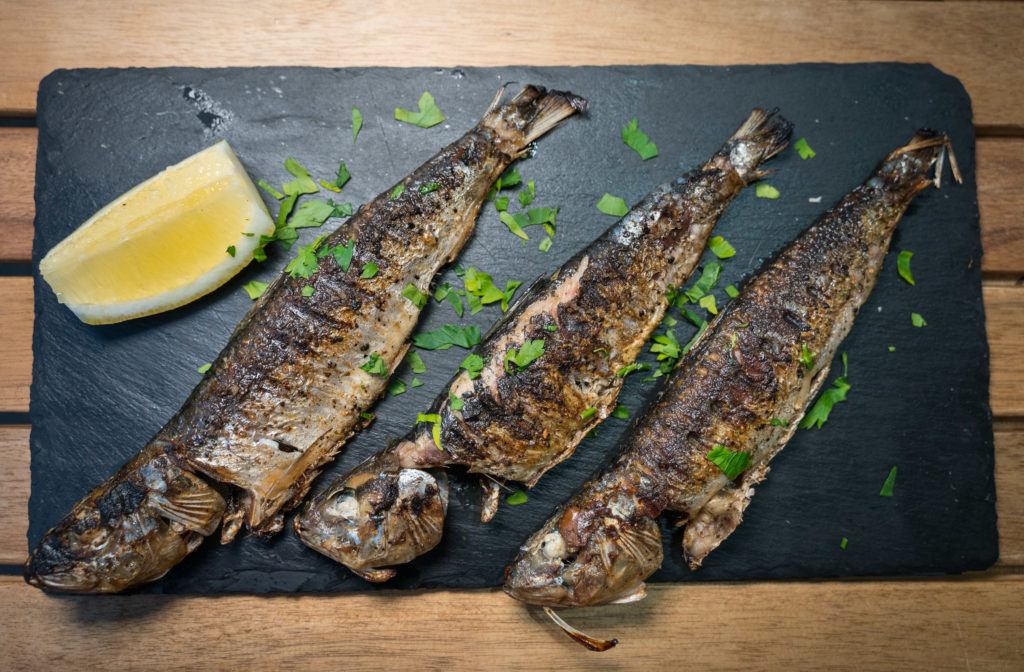
Lisbon Food: Sardinhas Assadas
Sardines! They may not be fancy but they are certainly a big part of the Lisbon food scene. As Lisbon sits on a wide river estuary just 20KM from the Atlantic, sardines are a local catch. They’ve formed a part of the diet at least since the Moors ran the city from the early 8th century.
Though you’ll find them year round, the best time to enjoy them is during the biggest harvest of the year, in early June. The festival of st. Anthony, the patron saint of Lisbon, marks the beginning of the harvest. The busiest part of the sardine celebration is around June 13th, where you’ll find streetside grills barbecuing these tasty fishies. Other times of the year you may be getting sardines thawed from frozen, still great but not quite as perfect.
As well as grilled sardines, tinned sardines are super popular and you’ll even find restaurants devoted to “conservas” serving different specialist tinned foods along with garnishes and drinks.
Piri Piri Chicken
Piri Piri Chicken is Spatchcocked / butterflied whole chicken grilled over hot coals. The Piri Piri refers to the hot spice rub used to get the skin crispy and delicious. With its roots possibly coming from Portuguese colonies in Africa, we’ll be looking into the full story of Piri Piri chicken in another article. But if you are in Lisbon, search out this chicken that will put Nandos to shame.
Try at Frangasqueira Nacional
Chouriço (Portuguese Chorizo)
Portuguese Chouriço is quite different from dry cured Spanish Chorizo. The meat is softer. The tradition in Portugal is to take a whole Chouriço and bring it to the table on a ceramic dish and light flames underneath it to cook it and crisp up the skin. You’ll also find Chouriço used as an ingredient in many other dishes.
Polvo à lagareiro (Baked Octopus)
A whole octopus is first boiled, then roasted with lots of olive oil and garlic. Segments are served with boiled potatoes. It’s a classic you’ll find all over Portugal.
Choco Frito (Deep Fried Cuttlefish)
Cuttlefish is a big step above squid in my opinion. Softer flesh. And the Portuguese seem to get it just perfect every time. A fantastic version can be found at Taberna do Relojoeiro in Almada, south of the river. Reservations advised it’s a small place.
Moelas
Speaking of Taberna do Relojoeiro, they sometimes feature a homestyle Portuguese favourite: Moleas. Chicken gizzards. This may not sound appetizing but it’s a fantastic comfort food and if you didn’t know it was gizzards, you’d just yum it up. We actually didn’t know until we tasted it what it was as the waiter just recommended it and we went with it.
Arroz de Mariscos
A one pot rice and mixed seafood dish. Flavoured with white wine and garlic, and featuring a choice of shellfish and other seafood. The dish is believed to originate from the beach town of Vieira, 100km or so north of Lisbon, but is popular nationwide and is another of the 7 gastronomic wonders chosen by locals.
Feijoada (Pork & Beans Stew)
A rich and hearty beans stew containing various chunks of pork including Chouriço and blood sausage. A Portuguese dish which is also popular in Brazil.
Alheira Sausage de Mirandela
Another dish which is popular nationwide, this sausage comes from the far north of Portugal, from Mirandela and the surrounding area. It’s made from chicken and/or game meat mixed with bread and is typically served as a whole sausage, not as an ingredient in other dishes. It may be served with a fried egg and chips (fries).
Unlike Portugal’s typical pork sausages, the Alheira sausage was invented as a way for the Jewish population of the region to trick the Spanish Inquisition into thinking they had truly converted to Christianity. It was normal for Portuguese Catholic families to make all their pork sausages and hang them outside their homes to dry. So, Jewish households could avoid standing out by hanging their chicken sausages outside.
Lulas recheadas à lisbonense
Lisbon style stuffed squid. The squid is stuffed with sausages, garlic and onions and then baked.
Some other dishes to look out for:
Iscas com elas – Thin strips of calf’s liver sauteed in garlic and white wine. The dish was brought to Lisbon in the 19th century from Galicia in Spain.
Cataplana de mariscos – A popular seafood stew with rice which originates from the Algarve coast in the south.
Caldeirada – A slightly spiced seafood stew with piri-piri, black pepper, ginger and garlic.
Favas com Chouriço – A filling mix of fava beans cooked with Portuguese chouriço.
Torresmos – Crispy, fried pork fat. The Portuguese version of chicharron (Pork Scratchings/pork rinds).
Caracóis – Snails boiled with garlic and oregano.
Tripas – Traditional stew made with tripe, veg and white beans. The original dish likely dates back to the 14th century.
What To Eat In Lisbon: Desserts & Drinks
Finally, for our foodies guide Lisbon – Sweet treats and boozy beverages.
Pastéis de Nata
Egg custard tarts in crispy puff pastry. The Portuguese version of these was invented at a monastery in Belem, a suburb of Lisbon. They sold the recipe to a baker just over the street, and that original bakery now sells thousands of pastéis de nata every day – a Lisbon food icon. But, are they the best in Lisbon?
My top pick beats out the ones in Belem. Try out Mantegeria in Barrio Alto.
The fame of these little sweet treats has spread far and wide, but how did the original egg tart come to be? It’s a much more complicated story than the very brief version above. A full article and podcast on egg tarts is coming July 2019.
Pao de Deus
A simple dessert/snack we fell in love with in Lisbon was Pao de Deus: The Bread Of God!
This is a brioche style bread roll with a thick, eggy, sweet coconut crust on top. It really is a bite of heaven, even for Megsy who is not a massive coconut fan.
Try Pão de Deus at A Padaria Portuguesa – a chain that you’ll find around Lisbon.
Ginjinha (Sour Cherry Liqueur)
Ginjinha is a liqueur made from Ginja (sour cherries) that originates from Lisbon.
The inventor of the Ginjinha was from Galicia, a region of Spain just North of Portugal. His name was Francisco Espinheira and he founded his little Ginjinha shop in 1840 and it’s still there! At least, it is the first dedicated shop known to sell the drink, it’s quite likely a similar drink has been made in Portugal since at least the 17th Century.
It’s easy to know you’re nearby A Ginjinha Espinheira as the stone tiles around the square next to this liquor shop start to get very sticky from all the little spillages of tasty liqueur.
Ginjinha is made by macerating sour cherries in brandy, the Portuguese name for these is ginja, which is where the name of the drink comes from. After maceration, the fruity brandy is then mixed with water, sugar and cinnamon. This produces a pleasing sweet and sour beverage to sip at.
You can have it served with or without a couple of whole cherries in the shot. I suggest getting them, they are booze saturated and give it more of a kick!
You can get your shot in a glass, or you can request an edible chocolate cup!
A Ginjinha Espinheira is not the only place in Lisbon to try this popular liqueur. You can even find it served by old ladies from their front room windows as you walk around the little neighbourhood of Alfama. Or you can buy a bottle in the supermarket.
Port Wine
Port wine is a sweet fortified wine (about 20% ABV) which hails from Porto but is available all over Portugal. If you won’t make it north, then try Port Wine in Lisbon.
Vinho Verde (Green Wine)
Vinho Verde translates as “green wine” but really means “young wine”. It refers to wines specifically made in and around the Minho province of North Portugal. The wine is not green, it can be red, white or rose. But these wines are drunk very young, bottled 3 to 6 months after harvest, and drunk soon after. Although this is not a Lisbon speciality, it is something you’ll find in wine shops and bars across the capital.
Beer
The most popular lager in Lisbon is Super Bock and Sagres. Sagres (my preference of the two) comes from the south and is a little maltier than Super Bock.
Accommodation in Lisbon:
Booking.com | Agoda | Hotels.com | Lastminute.com
Book A Lisbon Tour:
Love This Post? Why Not Pin It For Later?
 |
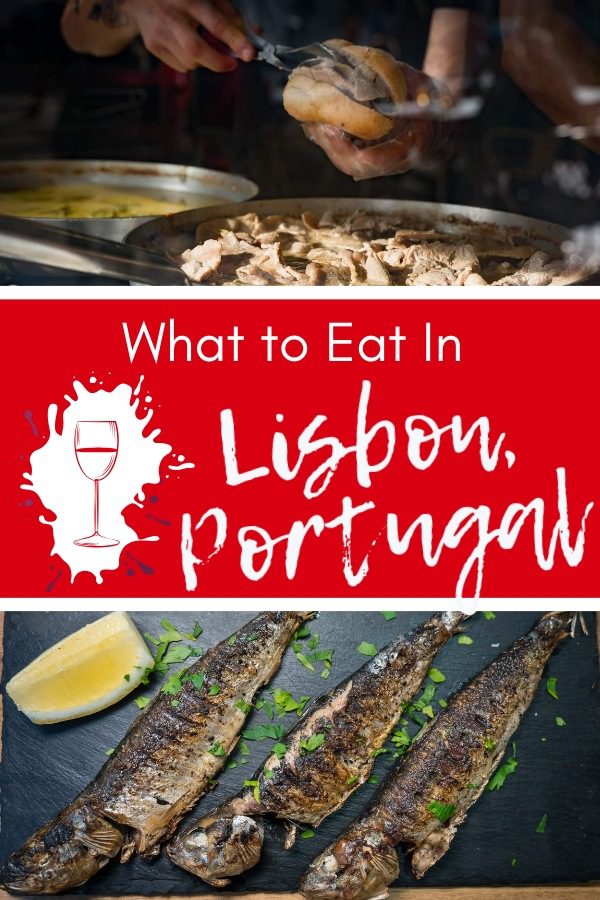 |
 |

